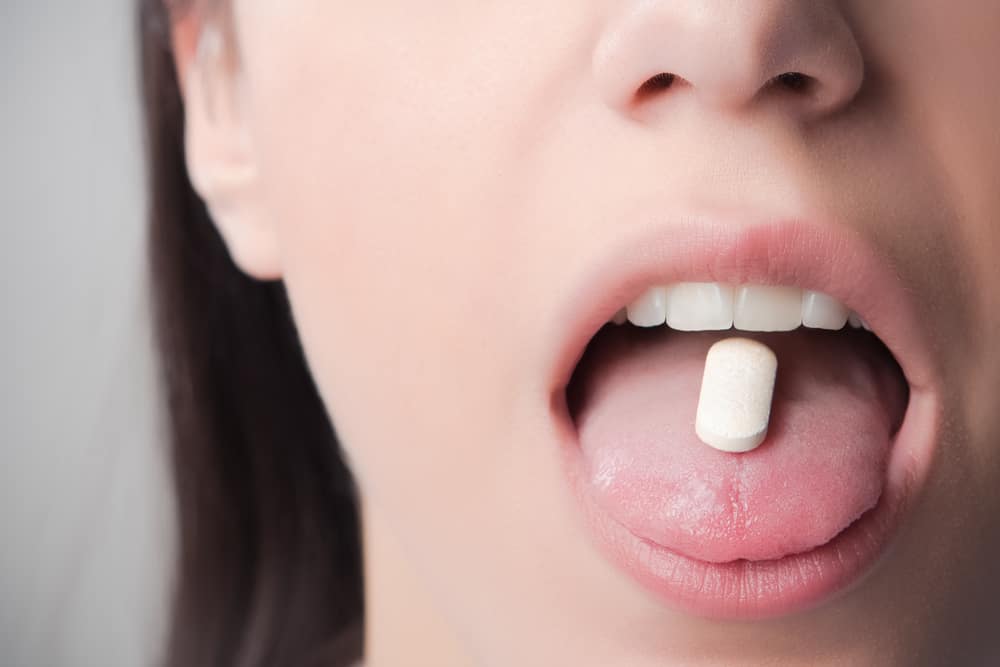Contents:
- Medical Video: Systemic Lupus Erythematosus (SLE)
- Why can lupus be caused by taking drugs?
- What drugs can be the cause of lupus?
- 1. Antiarrhythmias
- 2. Antihypertensive
- 4. Antibiotics and antimicrobials
- 5. Anticonvulsants
- 6. Anti-inflammatories
- 7. Biological agents
- 8. Diuretics
- 9. Cholesterol lowering
- 10. Others
Medical Video: Systemic Lupus Erythematosus (SLE)
Lupus or in the medical language called Systemic Lupus Erythematosus (SLE) is one of the most common autoimmune diseases in humans. According to data from the Indonesian Lupus Foundation (YLI) quoted from Republika, Indonesia's population of lupus in 2013 reached 13,300. Until now, it was unclear what was the cause of lupus. But several factors such as excessive body estrogen levels, UV light radiation, mercury exposure, and herpes zoster virus infection can increase your risk of getting this disease. The use of certain drugs is also suspected to be the cause of lupus.
Why can lupus be caused by taking drugs?
Lupus is an autoimmune disease, in which the body produces excess antibodies. In excess, the antibodies that should protect you from disease attack actually turn to attack healthy cells and tissues.
Some prescription drugs can be the cause of lupus. However, the mechanism behind the emergence of lupus symptoms due to drugs cannot yet be determined. So far it is known that the side effects of procainamide and anti-TNF drugs for rheumatic drugs often cause an increase in the number of antinuclear antibodies (ANA) in blood serum. Minocycline, a prescription antibiotic for treating acne, can also trigger the appearance of lupus symptoms. Prescription drugs to treat thyroid disorders (propylthiouracil) also trigger symptoms of lupus.
Drug-induced lupus has characteristics that are slightly different from common lupus. The symptoms of lupus due to medication are temporary as long as you take these drugs, and can be cured when treatment is stopped.
What drugs can be the cause of lupus?
Here is a list of drugs that can trigger symptoms of lupus during the use of the dose, based on compilation from Rubin et al (2015). However, it should be noted that the risk of each drug to trigger lupus symptoms is not the same - there are high-risk (more than 5 incidents per 100 people taking), moderate (1 in 100 cases), low (1 in 1000), and very low (<1 of 1000).
1. Antiarrhythmias
This class of drugs is used to treat symptoms of heart rhythm (arrhythmia), such as tachycardia (rapid heartbeat), brachycardia (slow heartbeat), and atrial fibrillation (abnormal heartbeat).
Antiarrhythmic drugs classified as high risk of triggering symptoms of lupus areprocainamide. However, this drug is rarely found in Indonesia. More common antiarrhythmic drugs, such as Quinidine are classified as moderate, temporarypropafenone, disopyramide, andamiodarone has a very low risk.
2. Antihypertensive
A number of commonly prescribed drugs for controlling hypertension such as enalapril, lisinopril, clonidine, atenolol, labetalol, pindolol, minoxidil, prazosin, methyldopa, captopril, asebutolol include low risks. Minoxidil is also commonly used as a hair growth remedy,
However, hydralizin is classified as a high-risk antihypertensive drug to be the cause of lupus.In Indonesia, hydralazine is available in combination with the brand Ser-Ap-Es in the form of tablets containing reserpine, hydralazine and hydroclortiazide.
3. Antipsychotics
Some prescription antipsychotic drugs to treat symptoms of psychosis and certain psychiatric disorders, such as chlorpromazine, clozapine, ferfenazine, fenelzine, chlorprothixene, and lithium carbonate can trigger symptoms of lupus. However, antipsychotic groups are classified as low risk.
4. Antibiotics and antimicrobials
Type antibioticsisoniazid or INH, minocycline, nalidixic acid, streptomycin, sulfamethoxazole, and quinine can also be the cause of lupus if not consumed according to the rules of use. But the risks include low.
5. Anticonvulsants
Prescription drugs to treat seizures and epilepsy, such as carbamazepine, clobazam, phenytoin, trimethadione, primidone, etosuksimid, and valproic acid can trigger symptoms of lupus during use. Your risk is low.
6. Anti-inflammatories
Anti-inflammatory drugs such asD-penicillamine, sulfasalazine, phenylbutazone, mesalam (z) in, zafirlukast low risk of triggering symptoms of lupus. Penicillamine is a drug used to treat various diseases, including antidote to lead poisoning, rheumatism, Wilson's disease, and cystinuria.
7. Biological agents
Anti-TNF alpha, such as infliksimab and etanersept, and alpha interferon are commonly used to treat low-risk rheumatism to trigger lupus.
8. Diuretics
Diuretic drugs such as clortalidone and hydroxyliazide are very low risk for causing lupus.
9. Cholesterol lowering
Cholesterol-lowering drugs such as statins such as lovastatin, simvastatin, and atorvastatin are relatively low risk for triggering symptoms of lupus.
10. Others
Aminoglutethimide, timolol eye drops, ticlopidine, levadopa, deferipron are low risk of causing lupus.
If you use the drugs above and are worried about the risk of lupus, consult further with your doctor. Your doctor may be able to change the prescription or change the dose according to your condition.












